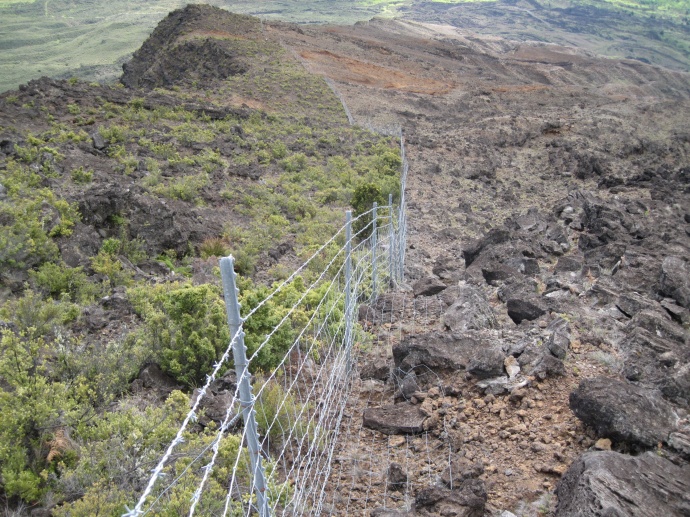Meetings to Discuss Proposed Protection of Native Habitat at Nuʻu

Existing park boundary fence along the upper elevations near Nu’u and Kaupō Gap. Left side shows habitat recovery. Right side shows areas impacted by feral animals. Photo credit: Haleakalā NP, C. Fukushima.
By Maui Now Staff
The proposed protection and restoration of habitat for native species at Nuʻu on the leeward slopes of Haleakalā will be discussed at two upcoming public scoping meetings.
The National Park Service, in partnership with the Leeward Haleakalā Watershed Restoration Partnership and the National Fish and Wildlife Foundation, propose to protect and restore either 1,300 or 2,100 acres of habitat in the upper elevations of Nuʻu.
The park is starting to prepare an Environmental Assessment and welcomes public participation during the environmental analysis process.
The public meetings will run from 5:30 to 7 p.m. on Wednesday, May 13, 2015 at the Kula Community Center; and on Thursday, May 14, 2015 at the Hāna High and Elementary School Cafeteria.
The area would include a large portion of the Nu’u parcel of Haleakalā National Park, and is targeted at providing additional breeding and nesting habitat for endangered ʻuaʻu or Hawaiian petrel.
Park officials say “habitat restoration would be accomplished by building an ungulate control fence; conducting feral and introduced animal control; removing invasive, non-native plants; and increasing native plant cover through out-planting and seed scatter.”
According to information released by the National Park Service, “The fence installation is proposed to keep feral and introduced animals (feral goats, feral pigs, feral dogs, axis deer, and cattle) out of known ʻuaʻu habitat and to facilitate habitat restoration within the exclosure.
Today, the largest known breeding colony of the ʻuaʻu is found at Haleakalā Crater on Maui, with other colonies on Mauna Loa, Hawaiʻi Island, Kauaʻi and on the summit of Lānaʻi.
The 4,178 acre Nuʻu parcel of at Haleakalā was acquired by the National Park Service in 2008.










